Chabówka 2022-01-16
Steam locomotive Ty23-104.
The Ty23 series steam locomotive was a Polish heavy locomotive, which was developed by Polish engineers and produced in the period 1923 - 1934. Ty23 means a freight locomotive with a "y" axis system, which was approved in 1923. Axis system 1'E, i.e. 1-5-0 (oOOOOO), and the Polish designation is a small letter "y".
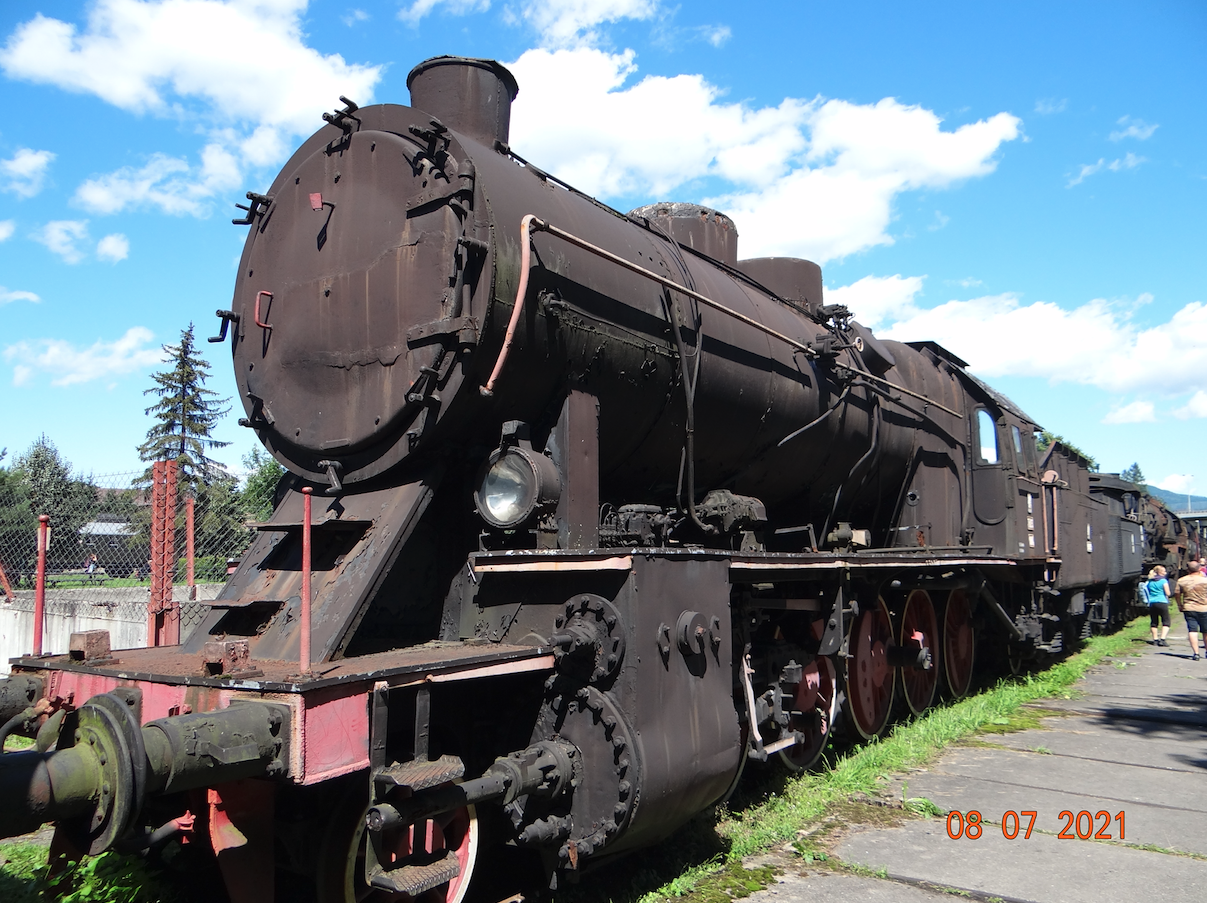

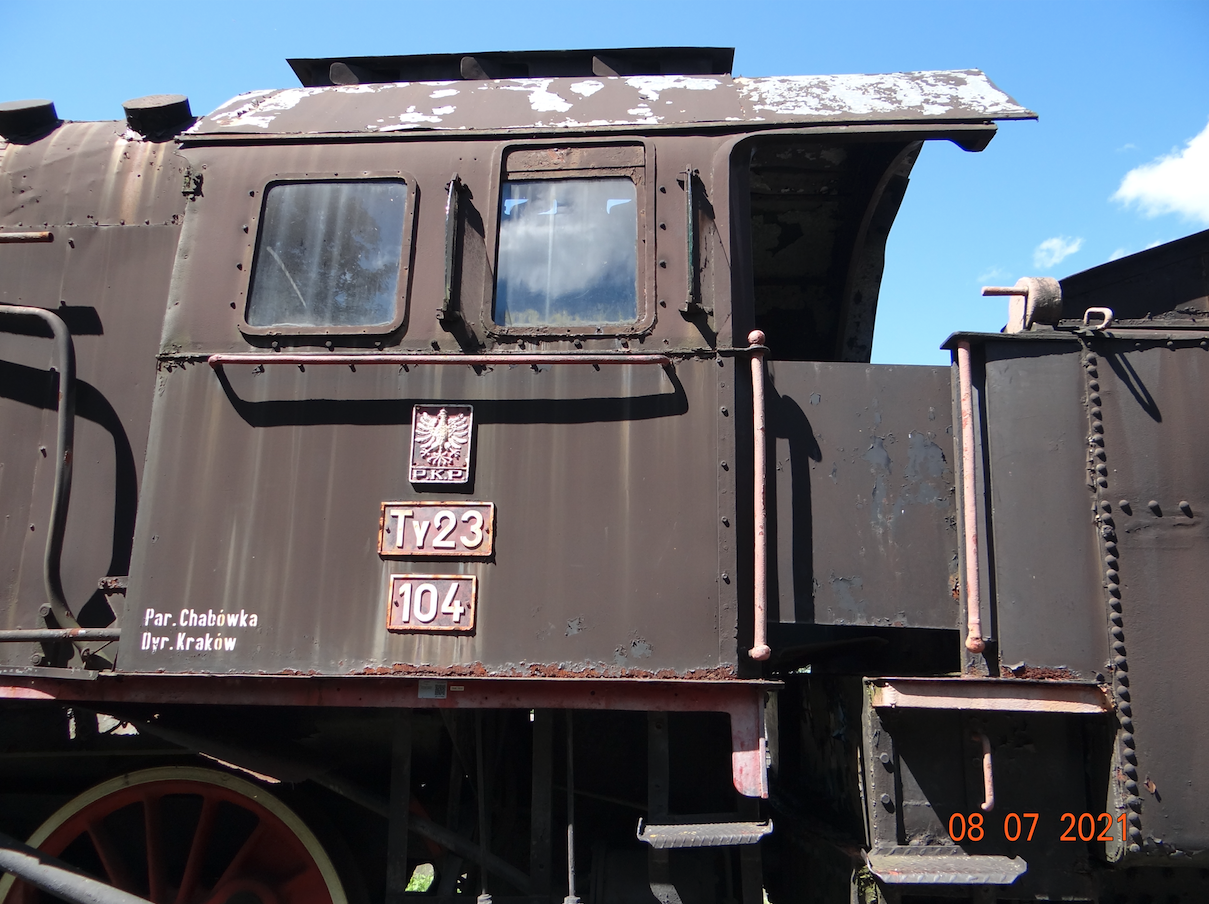
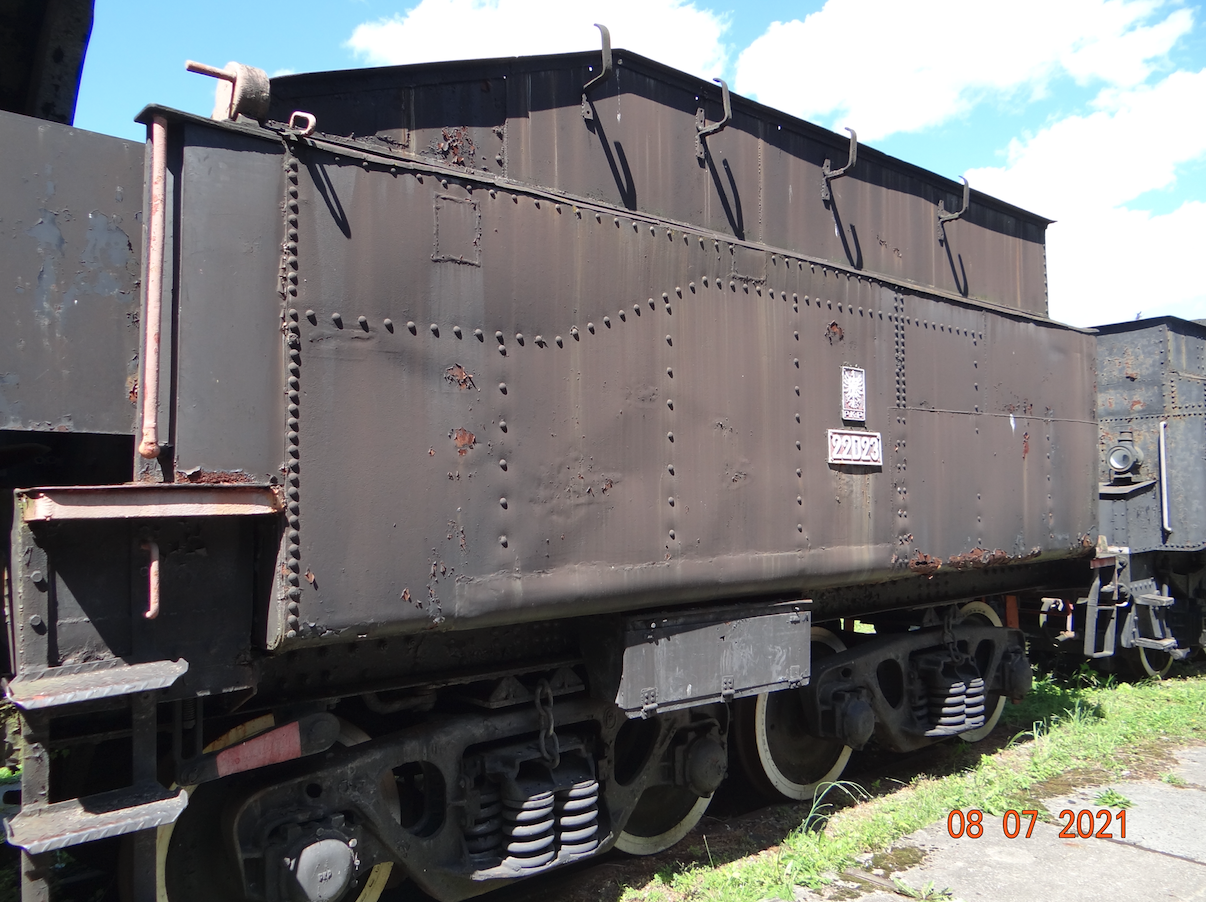
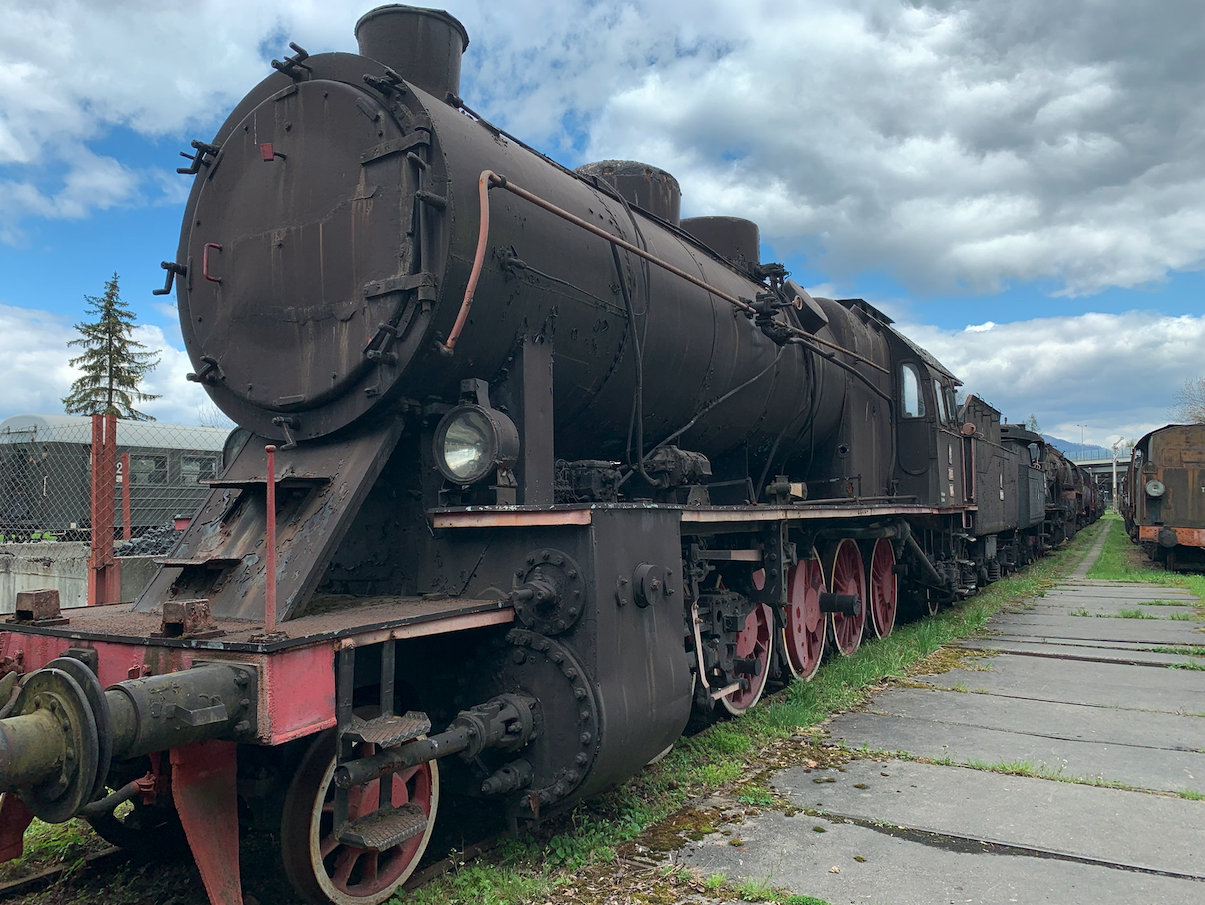
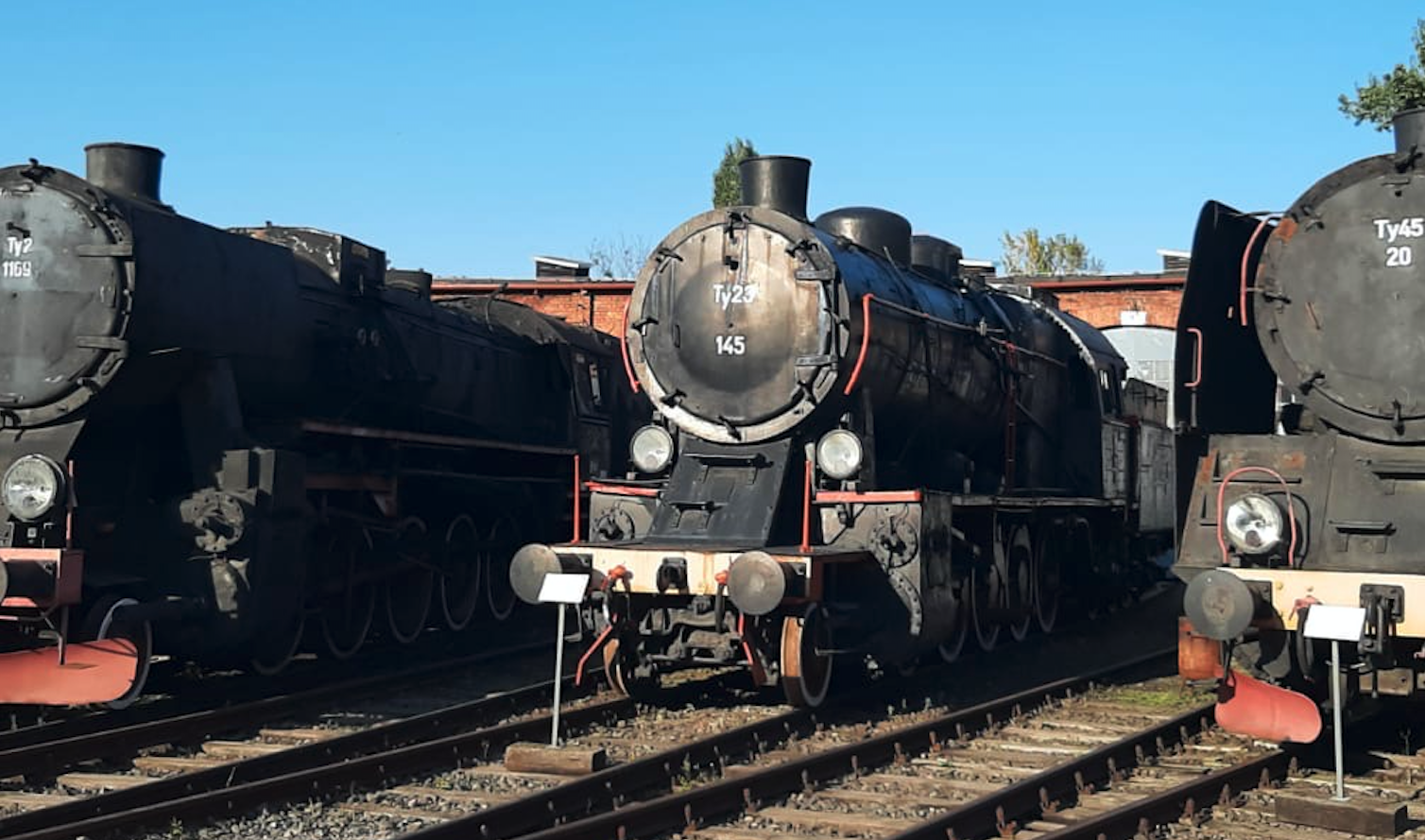
After the end of the Polish-Bolshevik war in 1920, it was possible to focus on the topic of railways in terms of the development of the national economy. There was a large shortage of heavy freight locomotives. The design of the new, heavy locomotive was developed by the Polish engineer Wacław Łopuszyński. However, the reconnaissance of the factories showed that none of them is able to build the locomotive in the country. At least temporarily. As heavy industry in Europe slowed down production after the end of the Great World War, Poland was offered help. A group of engineers headed by Wacław Łopuszański went to Berlin to the Schwartzkopf factory. In Berlin, a detailed technical plan for the new locomotive was prepared and series production was started. The locomotive received the designation of the Ty23 series by the Polish State Railways. Only 15 copies were made in Berlin, because the plants in Belgium offered a much lower price for the production of the next Ty23 locomotives. The Belgians have already built steam locomotives of the Tr21 series for Poland. Therefore, a contract was concluded with the Belgians for the production of 60 examples of Ty23 series locomotives. The locomotives were manufactured by three plants: Cockerill (25), St. Leonard (20 copies), Franco-Belge (15 copies). As a result, 75 examples of Ty23 series locomotives were built abroad.
In Poland, the production of Ty23 locomotives was started by HCP in Poznań. The first locomotive was completed in 1926. The locomotive was given the No. 76. As the Ty23 locomotive was very much needed on the railroad, production was also started in Warsaw (WSABP) and Chrzanów (FABLOK). By 1934, 612 Ty23 locomotives were built. 164 copies were built in HCP, 106 in FABLOK, 267 in WSABP. Out of this number, 106 copies were given to the French-Polish Coal Railway Society, which owned the Herby Nowe (near Częstochowa) - Gdynia route, the most important route of the Second Polish Republic.
The Ty23 series steam locomotives were very successful and constituted the basic freight locomotive until the invasion of Poland by the Germans and Russians. During the occupation, all steam locomotives were taken over by the occupiers. A few pieces ended up in Romania. The Russians transformed all the seized Ty23 locomotives into a wide track of 1,524 mm at the locomotive depot in Stanisławów (now Ivano-Frankivsk).
After the Second World War, the Polish Ty23 steam locomotives were reluctantly returned by illegitimate users. The last one was not returned until 1956. About 350 out of a total of 612 machines were returned. Generally, the returned locomotives were very worn-out and not always suitable for renovation. Eventually, 312 Ty23 series machines returned to service in PKP, with new numbers from 1 to 312, depending on the order in which they were returned to PKP. In service after 1945, the Ty23 steam locomotives were repaired and overhauled at ZNTK in Bydgoszcz, Gliwice, Oleśnica, Poznań and Wrocław. Steam locomotives served in the Polish State Railways until 1979. Until now, three Ty23 locomotives have survived and none of them is operational. There is a Ty23-104 steam locomotive in the Chabówka open-air museum.
Ty23-104.
The Ty23-104 steam locomotive was built in 1929. He was given the factory number 139. The locomotive worked in DOKP Warszawa. In 1947, the locomotive was returned to Poland and operated in the Tarnowskie Góry engine house until 1977, when it was withdrawn from service. The locomotive was rebuilt in the Chabówka open-air museum in 1994.
Ty23-145.
The Ty23-145 steam locomotive is in the open-air museum of Jaworzyna Śląska. The steam locomotive was built in the factory of Warszawska Spółka Akcyjna Budowy Parowozów in 1933. He received the factory number 355, and in PKP Ty23-689. During the occupation, it was taken over by the Germans and received the number 58 2729. After the Second World War, it had tender 22D23-161 and the new number Ty23-145. From 1945, the locomotive served successively: Skarżysko Kamienna, Łazy, Racibórz, Rybnik, Strzemieszyce, and Bytom. In 1978, the steam locomotive was removed from the inventory and sold to the BUMAR Construction Machines Combine in Warsaw. After the end of its operation, it was handed over to the Railway Museum in Warsaw. In 2004, it was transferred to the Jaworzyna Śląska open-air museum.
T-T data of the Ty23 locomotive:
Productions in the period 1923 - 1934. Axis system 1'E, i.e. 1-5-0 (oOOOOO), and the Polish designation is a small letter "y". The empty weight of the locomotive is 87,450 kg. The curb weight of the tender is 22 600 kg. Service weight of the steam locomotive is 95,000 kg. Service weight tendra 54 100 kg. Locomotive length 12.55 m. Total length 20.06 m. Height 4.62 m. Driving wheels diameter 1.45 m. Roller diameter 1.00 m. Tender type 22D23. Water reserve 21.5 m3. 10 tons of coal stock. Tender has 4 axes. Construction of the tender from 1923. Boiler pressure 14 at. The heating area of the boiler is 227.16 m2. The superheater area is 73.5 m2. The grate area is 4.50 m2. Design speed 60 km / h.
Written by Karol Placha Hetman
